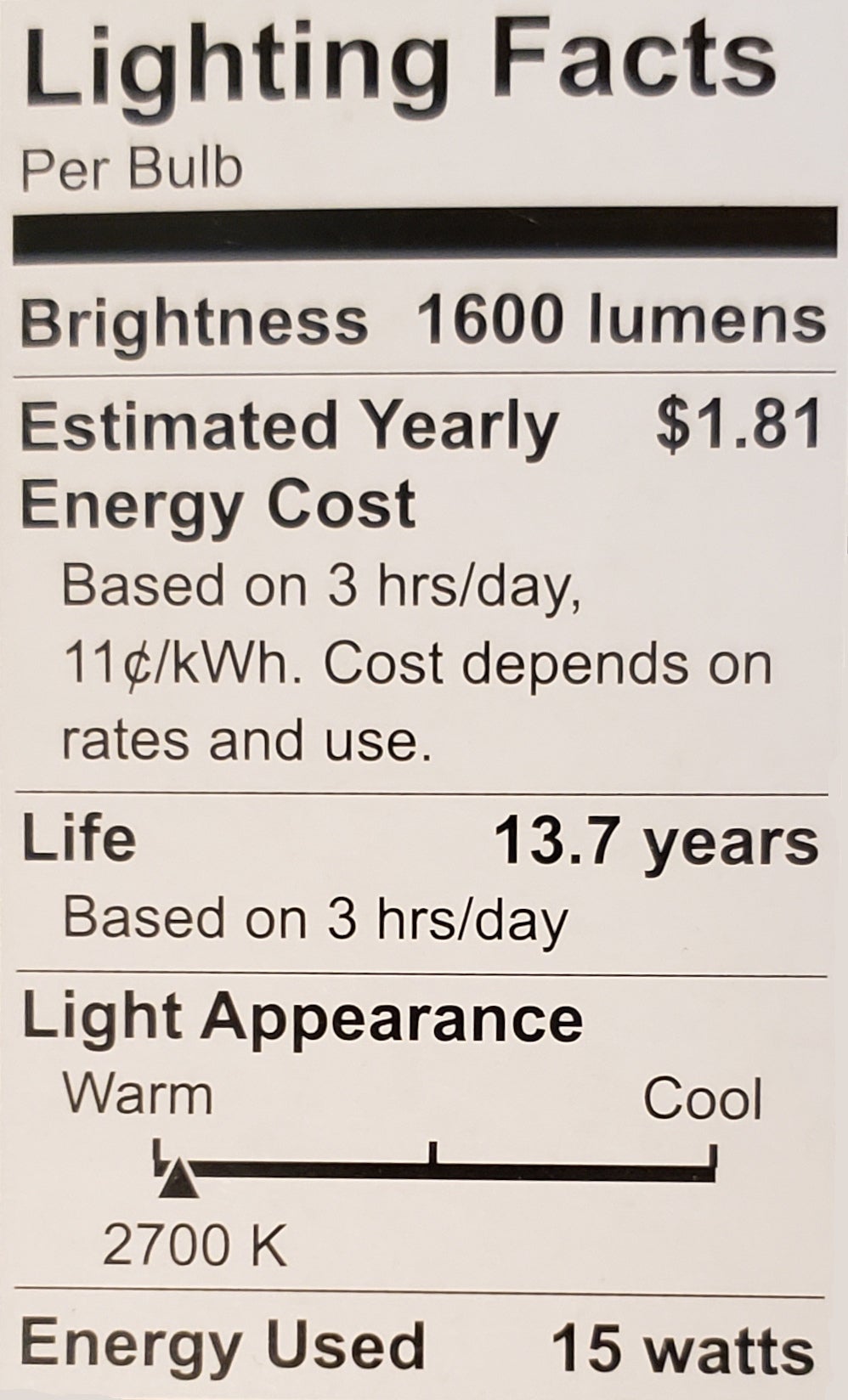If you’re of a certain vintage (i.e., old), you know that buying lightbulbs used to be a relatively simple process: You noted the wattage that you needed and you bought more of the same. A 40-watt bulb produced dimmer light than a 100-watt bulb. Easy! Sure, there were always more exotic bulbs out there — halogen bulbs for that weird floor lamp you accidentally bought after college graduation, those tiny bulbs inside the kitchen appliances you swore you would replace for years before finally simply replacing the appliance itself because it was easier — but for the basic task of lighting the rooms in your house, it was a pretty simple process.
Today, things are much more complicated. As usual, this is because technology has advanced. Not only are lightbulbs more energy-efficient and long-lasting, but they also offer a wider range of brightness, warmth, and aesthetics. This has made it possible to fine-tune the lighting in your home, but that also means buying lightbulbs has become a pretty fraught activity. Even the lightbulb section in your local supermarket is now crowded with what seem like exotic choices, and the old-fashioned watt system is no longer as meaningful as it was.
The good news? It’s still a pretty simple process to choose the right bulb for the right purpose. Here’s all you need to know to understand modern light bulbs.
The light bulb fitting
The fitting is how your bulb fits into the socket. The most common remains the old-fashioned Edison screw because the world is full of legacy light fixtures that use this fitting. Edison screws come in different sizes — your standard lightbulb uses the E26, while smaller bulbs designed for chandeliers and such use the E12. There are also E11 and E17 fittings out there, but they tend to be much more specialised, so you won’t encounter them often.
Another fitting you’ll commonly encounter is the G or GU fitting, which looks like two little prongs. This fitting is typically used with halogen bulbs, and involves inserting the prongs into two holes and twisting until they lock in. There are varying sizes of G-style fittings (G4, G9, and GU10 are common).
There are a lot of other fittings out there in the lightbulb universe, but you won’t encounter most of them regularly.
The light bulb label
Like a lot of things in our consumerist paradise, almost all of the information you’re gonna need is right there on the label. Look at any box of lightbulbs and you’ll see a label like this:

These “Lighting Facts” tell you three key things: Watts, lumens, and colour temperature.
- Lumens: Lumens is a measurement of brightness. When you have more lumens, you have more light — an old-school 100-watt incandescent bulb produced 1,600 lumens. If you need your room to be lit up like you’re escaping from prison, you want as many lumens as possible. If you want a nightlight to guide you to the bathroom at 2 a.m., you need a much lower lumen rating.
- Watts: This used to be useful to determine the brightness of your bulb, but today it’s mainly useful to see how much energy your bulb needs to produce its light. An old-school incandescent light bulb, for example, needed 75 watts of power to produce 1,100 lumens of light. A modern LED bulb needs just 13 watts.
- Temperature: All light has a kelvin temperature, from warm to cool. Warmer light is yellow, cooler light is white or blue. Choosing the temperature of your light is crucial: Do you want a cosy reading nook? Go warmer. Do you need to make a finished basement feel like it’s connected to the outside world? Go cooler. You should, of course, adjust to suit your own preferences, but here’s a guide:
Bedrooms: 2700-3000k, warm and soothing
Bathrooms: 3000-4000k, clean and crisp
Living Spaces: 2700-3000k, warm and relaxing
Kitchens: 3000-4000k, clear and bright
Offices & basements: 3500-5000k, cool and daylit
Bulb type
These days, almost all of the light bulbs you buy will be either light-emitting diodes (LEDs) or halogens. You can still find and purchase old-fashioned incandescent bulbs, but they are increasingly hard to find and you don’t really want them, as they’re incredibly energy-inefficient and don’t last long, making them an expensive and wasteful choice. Compact fluorescent light (CFL) bulbs (the ones with the “twisted” glass look) were some of the first high-efficiency bulbs on the market, but they can’t compete with LEDs in terms of longevity and energy use, so they’re fading fast.
As a result, if you’re shopping for a bulb with a standard Edison Screw fitting, you want an LED. LEDs have rapidly taken over the market and chances are you can find an LED in whatever variety or style you need. The only thing to consider aside from lumens, wattage, and kelvin temperature is whether or not the LED will go into an enclosed fixture like the ones you typically find on ceilings. If your bulbs are going to live inside a glass enclosure of some sort, you need enclosure-rated bulbs. This is because LEDs, while giving off much less waste heat than classic incandescent bulbs, still give off some heat. When that heat is trapped inside an enclosure, it will make the LEDs wear out much more quickly.
One final note about dimmers. Many dimmer switches were designed to work specifically with incandescent bulbs, and may not work well (or at all) with dimmable LEDs. If you find that to be the case, you’ll need to swap out your dimmer for a modern version.
Light bulbs have gotten more complicated, but with that complication comes the power to customise our living experience, which is pretty powerful stuff. All you need are a few crucial pieces of info, and you’re good to go (to the lighting store).

Leave a Reply
You must be logged in to post a comment.